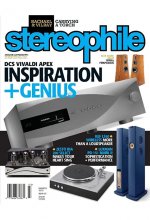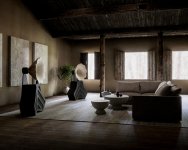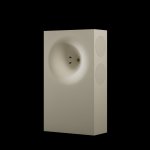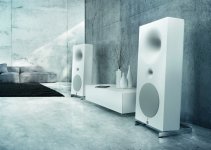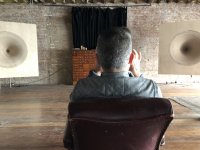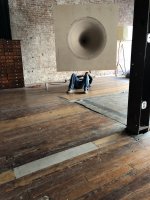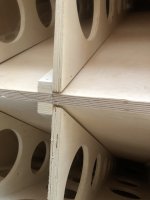The review was not long, but let's give a shout out to @cowanaudio and @Tom_Danley for being featured in this month's Stereophile.
Attachments
I gotta say, I actually got goosebumps when I checked out Cowan's new speakers. For easily 10+ years I've daydreamed about making some type of Unity horn speaker with wife-acceptance-factor. The main thing stopping me is I am not independently wealthy and I'm way more focused on saving for my retirement than DIY projects. If I could retire tomorrow, designing a Unity horn with real WAF is how I would spend my time.
Part of the reason I've always been a raving fan of Bill Waslo's speakers is that I think he's done a wonderful job of taking the ideas in the Synergy Horn and scaling them down to a size that works in a living room environment. If you see the pics of Bill's Small Syns, they look fairly large. This is not the case; Bill just has a TV that's something like 27." The Small Syns are really small and I think their sound rivals the Bill's Cosynes (which I bought.)
But Cowan has really knocked it out of the park here, these new speakers are just gorgeous.
Also, kudos for being brave enough to go with DSP and Class D amps. In the review in Stereophile, they talked about how they could hear sounds that were way outside the boundaries of the loudspeaker. IMHO, Synergy Horns are almost uniquely capable of doing this. Let's be realistic: Synergy Horns have an Achilles heel, which is that the crossover basically requires a rocket scientist to get it right. (Danley and Cowan both worked for NASA 😉 )
Although we can argue about whether DSP is "HiFi", there's no doubt that the ability to flatten out the phase and frequency response gets you that last 10% of performance which is nearly impossible with passive crossovers.
I'm not saying DSP is always required, but Synergy Horns are hideously complex beasts. I think builders always fixate on how the horn looks, but the "secret sauce" is the crossover IMHO.
Part of the reason I've always been a raving fan of Bill Waslo's speakers is that I think he's done a wonderful job of taking the ideas in the Synergy Horn and scaling them down to a size that works in a living room environment. If you see the pics of Bill's Small Syns, they look fairly large. This is not the case; Bill just has a TV that's something like 27." The Small Syns are really small and I think their sound rivals the Bill's Cosynes (which I bought.)
But Cowan has really knocked it out of the park here, these new speakers are just gorgeous.
Also, kudos for being brave enough to go with DSP and Class D amps. In the review in Stereophile, they talked about how they could hear sounds that were way outside the boundaries of the loudspeaker. IMHO, Synergy Horns are almost uniquely capable of doing this. Let's be realistic: Synergy Horns have an Achilles heel, which is that the crossover basically requires a rocket scientist to get it right. (Danley and Cowan both worked for NASA 😉 )
Although we can argue about whether DSP is "HiFi", there's no doubt that the ability to flatten out the phase and frequency response gets you that last 10% of performance which is nearly impossible with passive crossovers.
I'm not saying DSP is always required, but Synergy Horns are hideously complex beasts. I think builders always fixate on how the horn looks, but the "secret sauce" is the crossover IMHO.
Attachments
Cowan wrote about his work on the speakers here:
https://www.diyaudio.com/community/...horn-patent-expire.354260/page-2#post-6541946
https://www.diyaudio.com/community/...horn-patent-expire.354260/page-2#post-6541946
lol these are freaking bonkers
It's as if Tony Stark gave William Cowan five millions dollars to make Unity horns


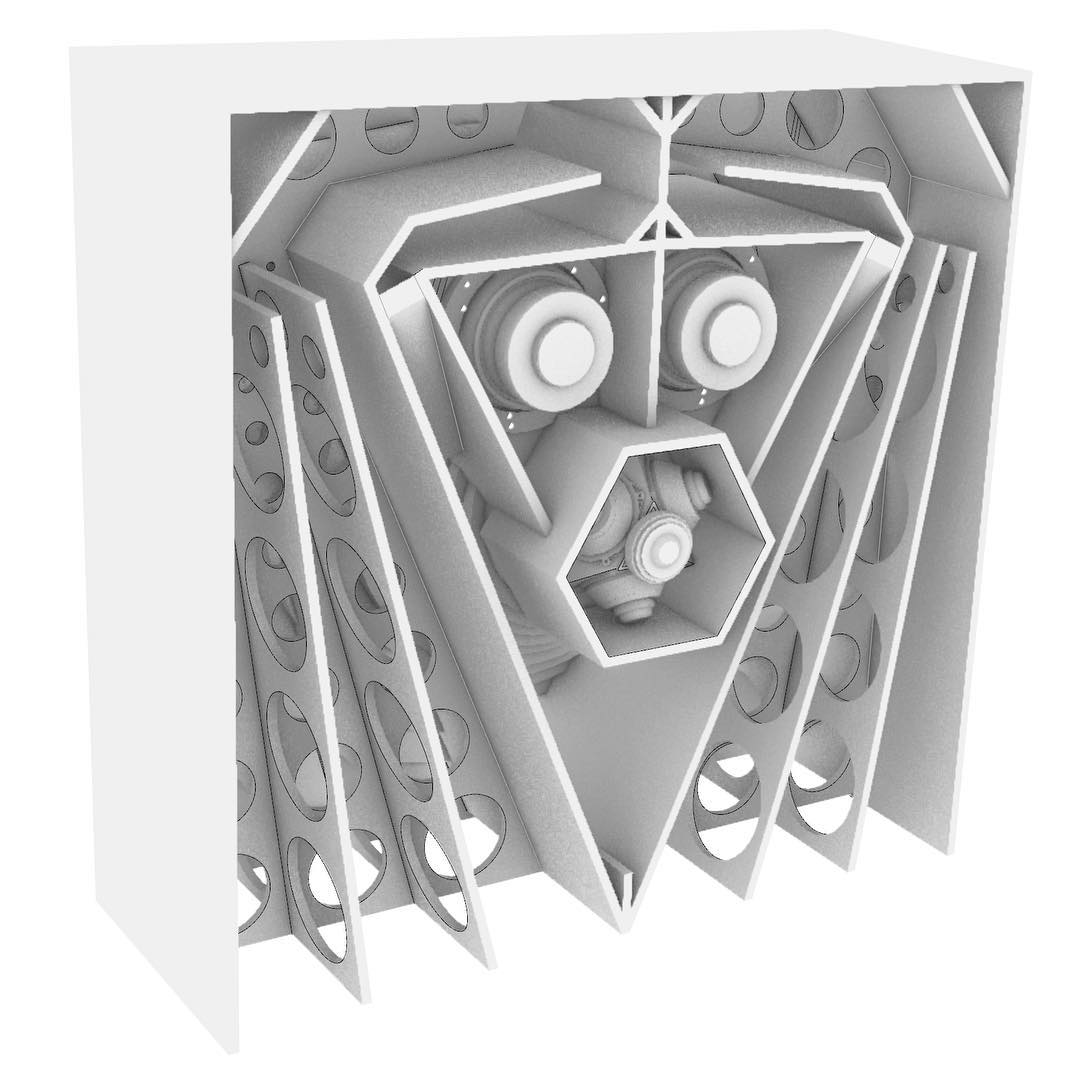
If I may editiorialize for a minute:
I think that the success of companies like "Magico" has a lot to do with where they're located. Geography matters. Magico is based in the Bay Area, in the same city where Tesla used to have their headquarters.
I work in tech, and I can't even count the number of dudes I've met who've spent $200,000 on a home theater or $500,000 on a boat. You can't go a week in Redmond WA without seeing a $300,000 Porsche or a $400,000 Lamborghini. These guys just have money to burn, and I really dig the fact that these crazy Unity horns are being funded by a Brooklyn tech entrepreneur.
It's as if Tony Stark gave William Cowan five millions dollars to make Unity horns
If I may editiorialize for a minute:
I think that the success of companies like "Magico" has a lot to do with where they're located. Geography matters. Magico is based in the Bay Area, in the same city where Tesla used to have their headquarters.
I work in tech, and I can't even count the number of dudes I've met who've spent $200,000 on a home theater or $500,000 on a boat. You can't go a week in Redmond WA without seeing a $300,000 Porsche or a $400,000 Lamborghini. These guys just have money to burn, and I really dig the fact that these crazy Unity horns are being funded by a Brooklyn tech entrepreneur.
The Instagram makes me want to sell my house and buy some speakers lol
https://www.instagram.com/a.for.ara/
https://www.instagram.com/a.for.ara/
I added a roundover to my Waslo Cosynes, which are about the same witdth as Cowan's speaker.
It basically made no difference.
I think this is because everything is relative:
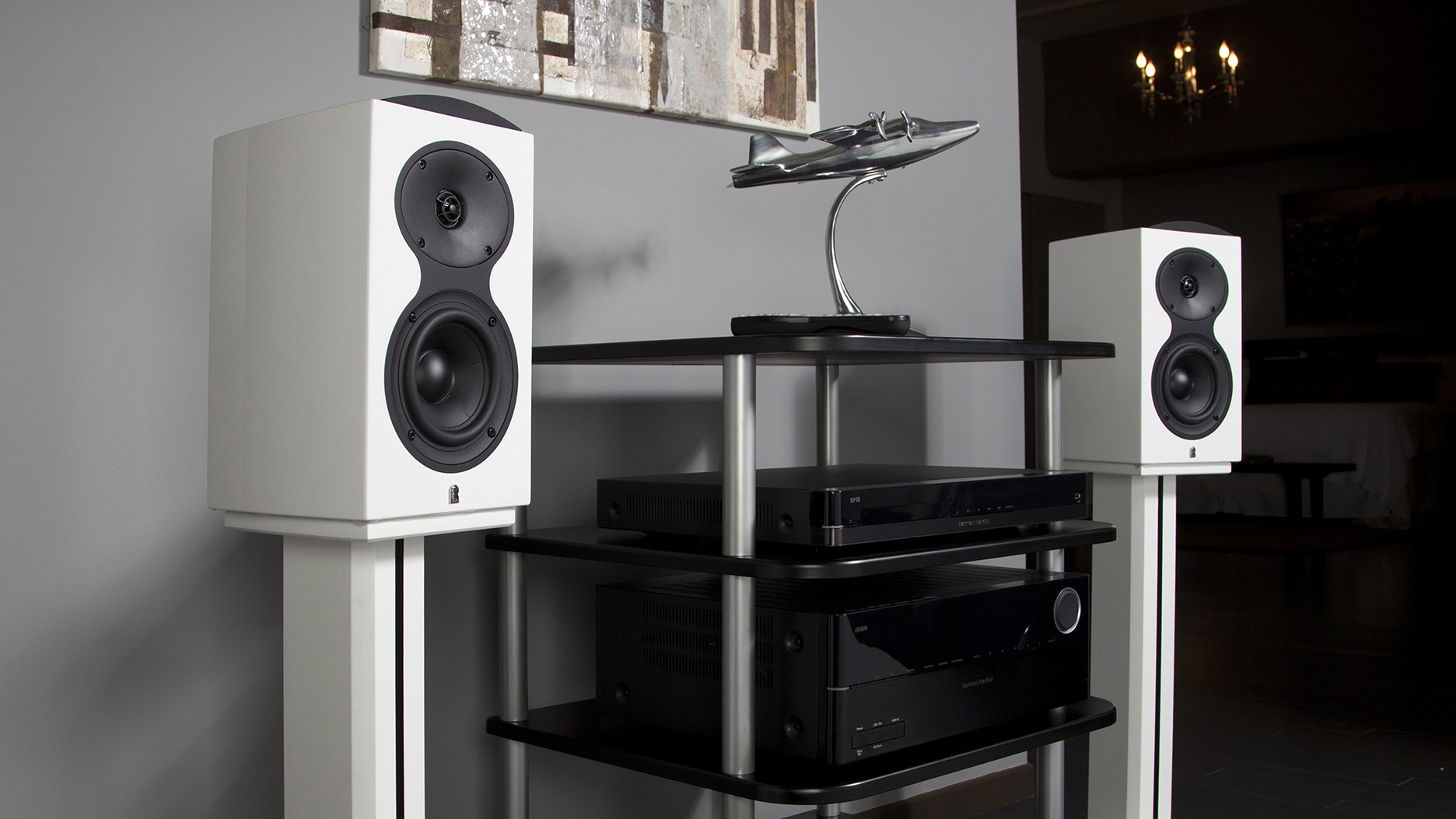
If you have a tweeter on a square edged baffle that's eight inches wide, and you're crossing over at 2khz, diffraction will be an issue. 2khz is seven inches long, and you have a complex relationship between the woofer and tweeter at the crossover point, and that crossover point is right where the diffraction happens on this box.
I've heard the $20,000 Revels back-to-back with the $2000 Revels, and my personal conspiracy theory is that they intentionally used a square edged baffle on the cheap ones, so that the $$$$ ones "disappear" better when listened to back-to-back. I noticed the same thing with my Gedlee Summas that I used to own; they have a crossover point at 700Hz (twenty inches long) and the baffle is about (wait for it) twenty inches wide. So the big ol' roundover on the Summas really makes this huge ol' speaker "disappear."
But Cowan's design is using a baffle that's twenty five inches wide (540Hz) and it's using a dome tweeter. So I'm betting the xover point is somewhere in the neighborhood of 1500hz, and by the time that the wavefront reaches the edges of the cabinet, the sharp edges won't be any real issue.
In a nutshell: YES roundovers are very very good. But if you're willing to use a particularly large baffle, you can probably get away without one.
It basically made no difference.
I think this is because everything is relative:

If you have a tweeter on a square edged baffle that's eight inches wide, and you're crossing over at 2khz, diffraction will be an issue. 2khz is seven inches long, and you have a complex relationship between the woofer and tweeter at the crossover point, and that crossover point is right where the diffraction happens on this box.
I've heard the $20,000 Revels back-to-back with the $2000 Revels, and my personal conspiracy theory is that they intentionally used a square edged baffle on the cheap ones, so that the $$$$ ones "disappear" better when listened to back-to-back. I noticed the same thing with my Gedlee Summas that I used to own; they have a crossover point at 700Hz (twenty inches long) and the baffle is about (wait for it) twenty inches wide. So the big ol' roundover on the Summas really makes this huge ol' speaker "disappear."
But Cowan's design is using a baffle that's twenty five inches wide (540Hz) and it's using a dome tweeter. So I'm betting the xover point is somewhere in the neighborhood of 1500hz, and by the time that the wavefront reaches the edges of the cabinet, the sharp edges won't be any real issue.
In a nutshell: YES roundovers are very very good. But if you're willing to use a particularly large baffle, you can probably get away without one.
Thanks John, it's been fun having the opportunity to realise my dreams.
The work you and your associates do is beyond compare imo.
Congrats on being able to enjoy a making a livelihood doing something you enjoy so much.
Nice work!!! 🙂
Congrats on being able to enjoy a making a livelihood doing something you enjoy so much.
Nice work!!! 🙂
Yes, very nice. The inside of the square is well done… i love the holey braces.
dave
dave
I should not have seen this thread. I now know that my full range MEH build from flat panels will need to evolve into one using a fully 3D machined horn one day.
I can't find the article online, I'm a subscriber to the printed edition.
It's basically a lengthier version of this article from The Wall Street Journal(!)
https://archive.is/0Gewp
It's basically a lengthier version of this article from The Wall Street Journal(!)
https://archive.is/0Gewp
It's as if Tony Stark gave William Cowan five millions dollars to make Unity horns
I got to do a studio visit and hear these in person. It was a remarkable experience.
They threw out a sound stage that completely enveloped you.
I actually thought I heard sounds coming from far corners of the room behind me at one point…not as an echo, but as if they originated there.
2nd pic is of me lying on the floor beneath one speaker…3rd is up inside the speaker.
They were driven by Hypex amps. With about 1 watt of power the bass coming out of the bottom was making my chest feel like my heart was palpating.
If I had a way to own them or something similar I’d do it in a heartbeat.
Hell, I wish I could get my hands on your Cosynes Patrick. Unfortunately I’m on the wrong side of the country.
Attachments
I'm glad you had the chance to have a listen to some speakers of ours, all be it very early ones. Our latest speakers have gone through two more generations of development since we did H4, which you listened to.
The grey ones in post #4 were the next generation, only 5' square. H4 was a bit too big for its own good! A pair of either will do over 135dB in room, they are quite physical when pushed. I had 136dB peaks at the listening position playing Temple Caves. This is the only time I've received a noise complaint. It was from the cafe on the other side of the four foot thick brick wall these speakers backed up to. The bass was shaking glasses off the shelf. They were trying to attract my attention, but I had no idea. Oops. 🙄
The grey ones in post #4 were the next generation, only 5' square. H4 was a bit too big for its own good! A pair of either will do over 135dB in room, they are quite physical when pushed. I had 136dB peaks at the listening position playing Temple Caves. This is the only time I've received a noise complaint. It was from the cafe on the other side of the four foot thick brick wall these speakers backed up to. The bass was shaking glasses off the shelf. They were trying to attract my attention, but I had no idea. Oops. 🙄
Last edited:
I know, that’s why I was asking on which page of the printed edition it was…I can't find the article online, I'm a subscriber to the printed edition.
It's basically a lengthier version of this article from The Wall Street Journal(!)
https://archive.is/0Gewp
Last edited:
- Home
- Loudspeakers
- Multi-Way
- William Cowan and Tom Danley Featured in Stereophile
